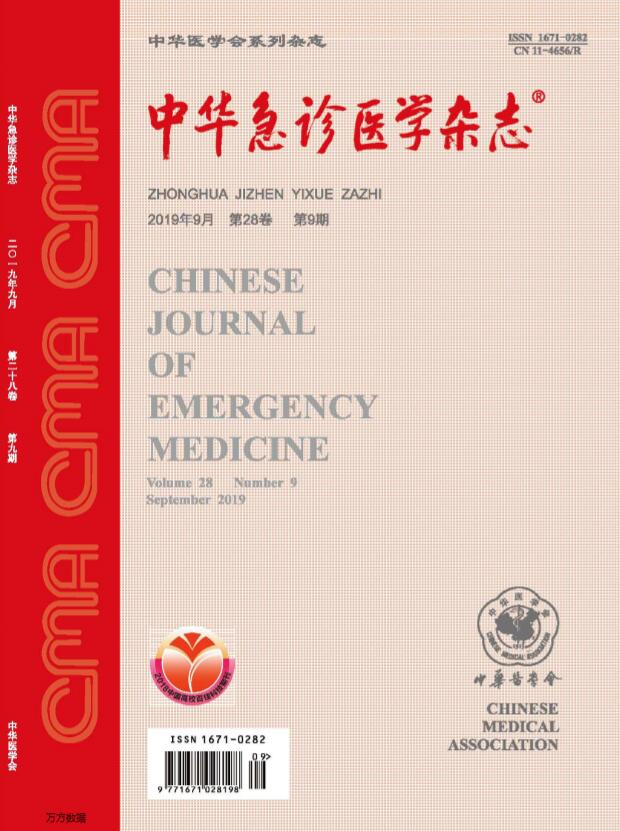The clinical characteristics and risk factors of mixed Candida/bacterial bloodstream infections
Q4 Nursing
引用次数: 0
Abstract
Objective To investigate the clinical characteristics and associated risk factors for patients with mixed Candida/bacterial bloodstream infections (BSIs). Methods A retrospective study was conducted in the Second Affiliated hHospital of Zhejiang University School of Medicine from February 2012 to June 2015. The clinical data of cases was collected, and the clinical characteristics, the microbiology data and outcomes in patients with mixed Candida/bacterial BSIs confirmed by blood culture were compared with those with candidaemia. A Logistic regression analysis was performed to investigate the independent risk factors. Results A total of 136 candidaemia cases were analyzed including 40 cases (29.4%) of mixed Candida/bacterial BSIs and 96 cases of candidaemia. Among the 136 candidas strains, the proportion of non-albicans exceeded the albicans (50.7% vs 49.3%), although the later was still the predominant one. There was no significant difference in the distribution of candidas strains between patients with mixed Candida/bacterial BSIs and patients with candidaemia. In patients with mixed Candida/bacterial BSIs, 25 strains (61.0%) of gram-positive cocci and 16 strains (39.0%) of gram-negative bacilli were isolated. Compared with patients with candidaemia, patients with mixed Candida/bacterial BSIs needed longer period of antifungal therapy [12.0 (4.0-25.0)days vs 7.0 (3.0-13.5) days, P=0.027], but the crude 30-day and 90-day mortality did not differ between the two groups (40.0% vs 32.3%; 45.0% vs 36.5%; both P>0.05). Univariate analysis revealed that the prior hospital stay, ICU admission at the onset of candidaemia, blood transfusion, human albumin infusion, mechanical ventilation, linezolid use and high SOFA score were related with the occurrence of mixed Candida/bacterial BSIs (all P<0.05). Multivariate analysis showed that only high SOFA score was the independent risk factor (P=0.003). Conclusions Gram-positive cocci were the predominant species in mixed Candida/bacterial BSIs. Compared with candidaemia, mixed Candida/bacterial BSIs needs a longer ICU stay, a longer hospital stay, and a prolonged antifungal therapy. High SOFA score is the independent risk factor for mixed Candida/bacterial BSIs. Key words: Candidaemia; Bacterial bloodstream; Mixed infection; Clinical characteristics; Strains distribution; Antifungal susceptibility; Risk factors; Clinical outcome念珠菌/细菌混合性血流感染的临床特征及危险因素
目的探讨念珠菌/细菌混合性血流感染(BSIs)的临床特点及相关危险因素。方法对2012年2月至2015年6月在浙江大学医学院附属第二医院就诊的患者进行回顾性研究。收集病例的临床数据,并将血液培养证实的念珠菌/细菌混合型BSI患者与念珠菌血症患者的临床特征、微生物学数据和结果进行比较。进行Logistic回归分析,以调查独立的危险因素。结果共分析了136例念珠菌血症病例,其中念珠菌/细菌混合型BSI 40例(29.4%),念珠菌血症96例。在136株候选菌株中,非白色念珠菌的比例超过了白色念珠菌(50.7%对49.3%),尽管后者仍然是主要菌株。念珠菌/细菌混合型BSI患者和念珠菌血症患者的念珠菌菌株分布没有显著差异。在念珠菌/细菌混合型BSI患者中,分离到25株(61.0%)革兰氏阳性球菌和16株(39.0%)革兰氏阴性杆菌。与念珠菌血症患者相比,念珠菌/细菌混合型BSI患者需要更长的抗真菌治疗时间[12.0(4.0-25.0)天vs 7.0(3.0-13.5)天,P=0.027],但两组30天和90天的粗死亡率没有差异(40.0%vs 32.3%;45.0%vs 36.5%;均P>0.05),念珠菌血症发作时入住ICU,输血,人白蛋白输注,机械通气,利奈唑胺的使用和SOFA评分高与念珠菌/细菌混合型BSI的发生有关(均P<0.05)。多因素分析表明,只有SOFA评分高时才是独立的危险因素(P=0.003)。结论革兰氏阳性球菌是念珠菌/细菌混合型BSI中的主要菌种。与念珠菌血症相比,念珠菌/细菌混合型BSI需要更长的ICU住院时间、更长的住院时间和更长的抗真菌治疗。高SOFA评分是念珠菌/细菌混合型BSI的独立危险因素。关键词:念珠菌血症;细菌血流;混合感染;临床特征;菌株分布;抗真菌易感性;风险因素;临床结果
本文章由计算机程序翻译,如有差异,请以英文原文为准。
求助全文
约1分钟内获得全文
求助全文
来源期刊

中华急诊医学杂志
Nursing-Emergency Nursing
CiteScore
0.10
自引率
0.00%
发文量
8629
期刊介绍:
Chinese Journal of Emergency Medicine is the only national journal which represents the development of emergency medicine in China. The journal is supervised by China Association of Science and Technology, sponsored by Chinese Medical Association, and co-sponsored by Zhejiang University. The journal publishes original research articles dealing with all aspects of clinical practice and research in emergency medicine. The columns include Pre-Hospital Rescue, Emergency Care, Trauma, Resuscitation, Poisoning, Disaster Medicine, Continuing Education, etc. It has a wide coverage in China, and builds up communication with Hong Kong, Macao, Taiwan and international emergency medicine circles.
 求助内容:
求助内容: 应助结果提醒方式:
应助结果提醒方式:


